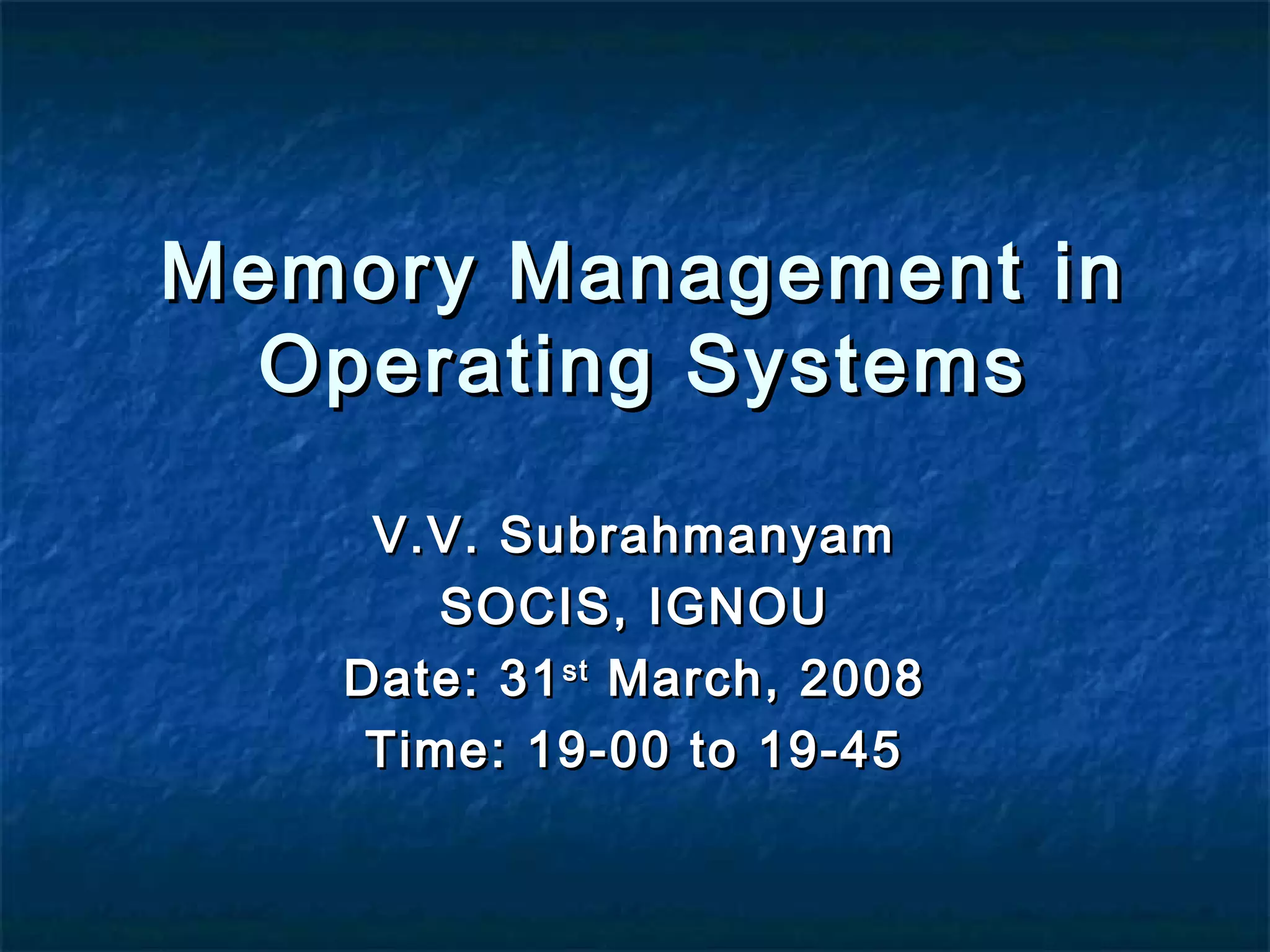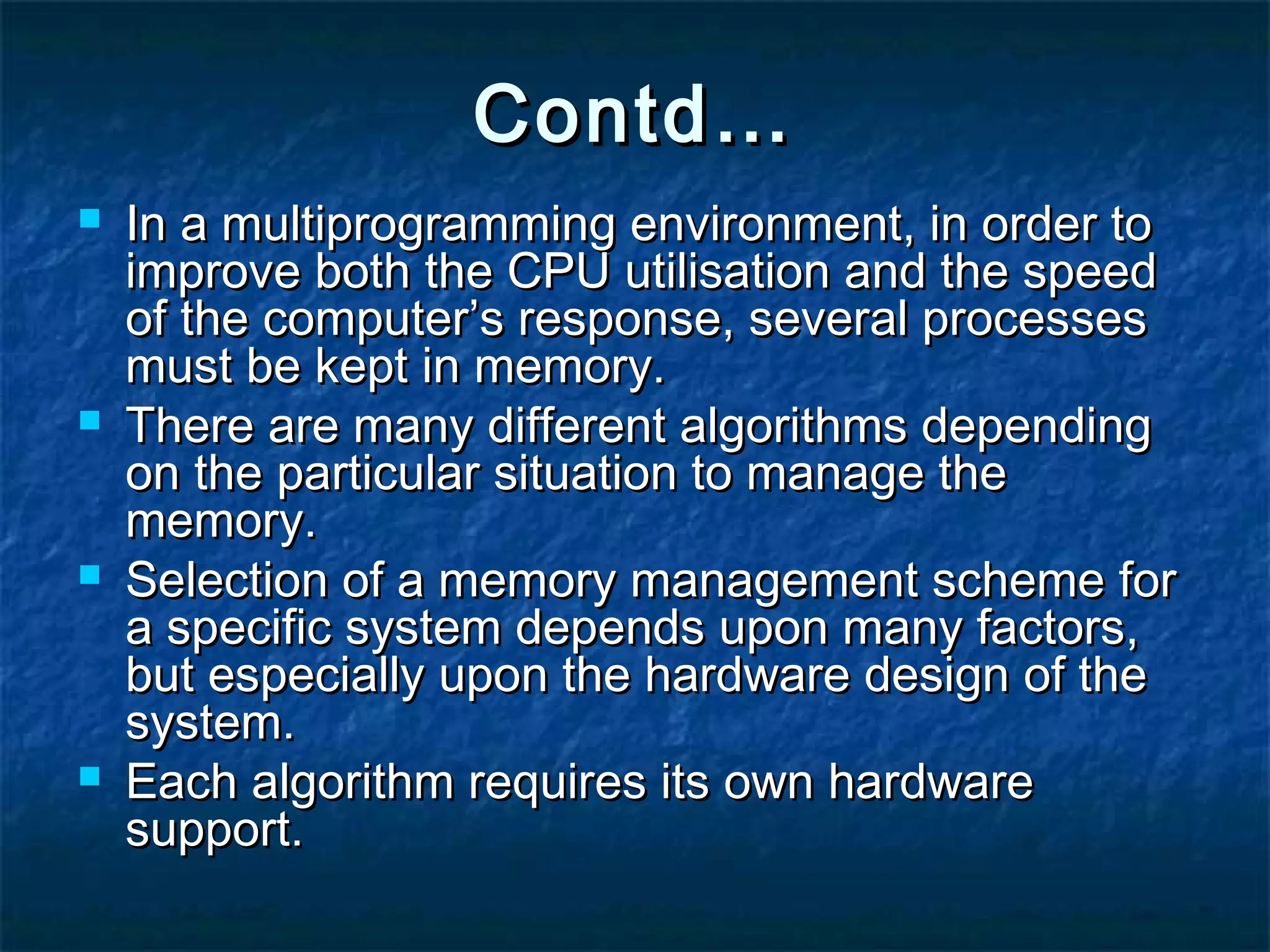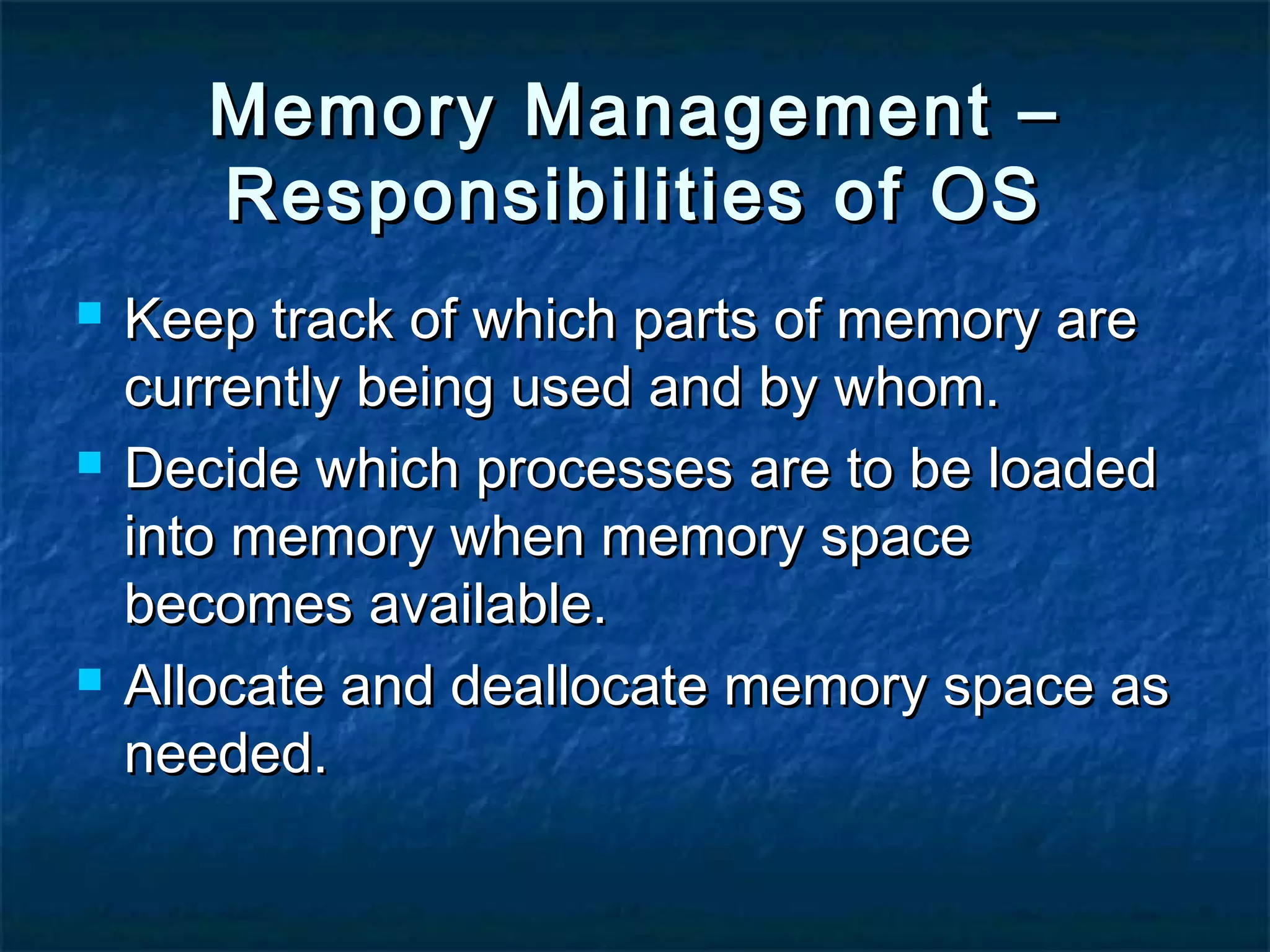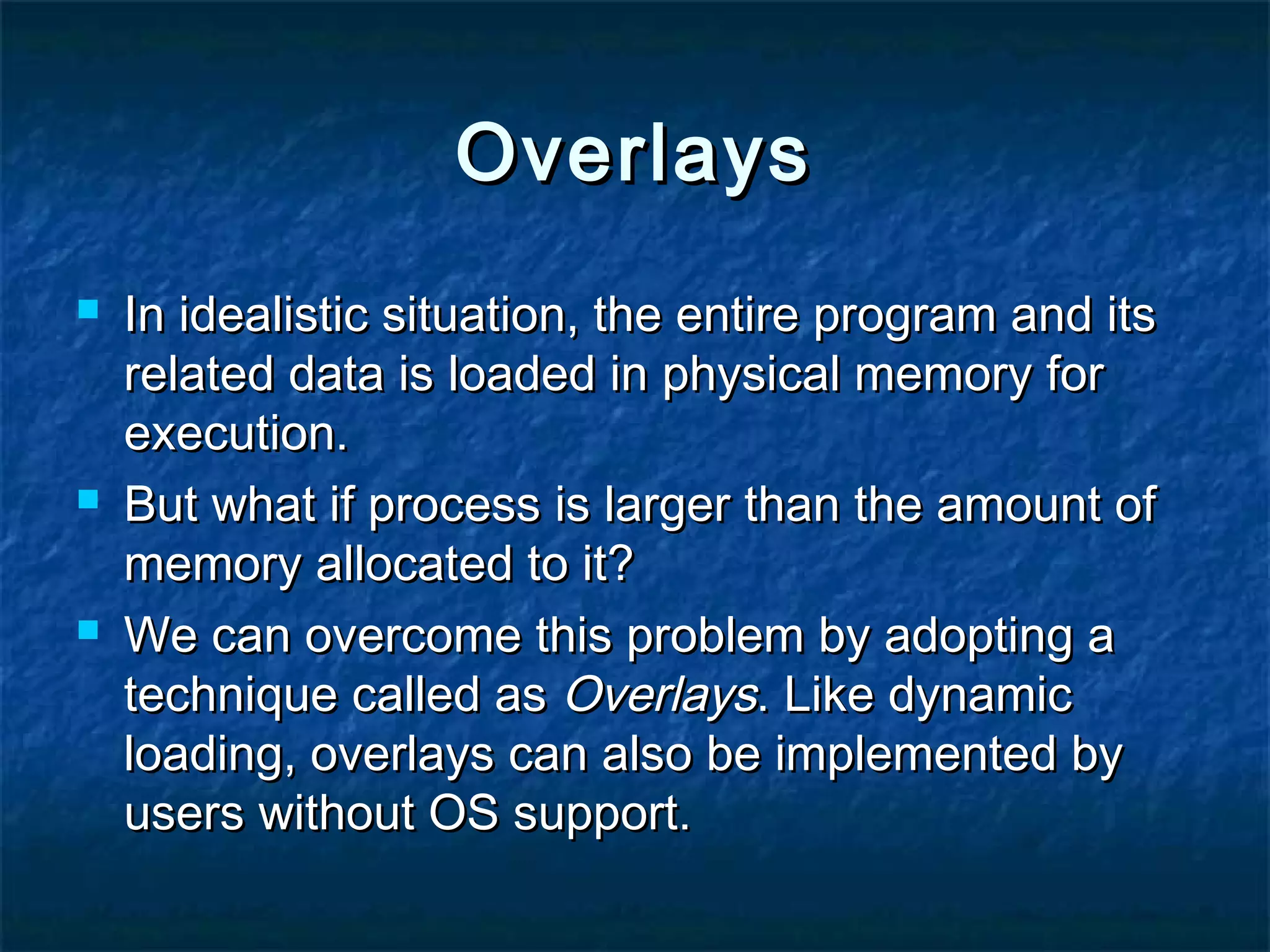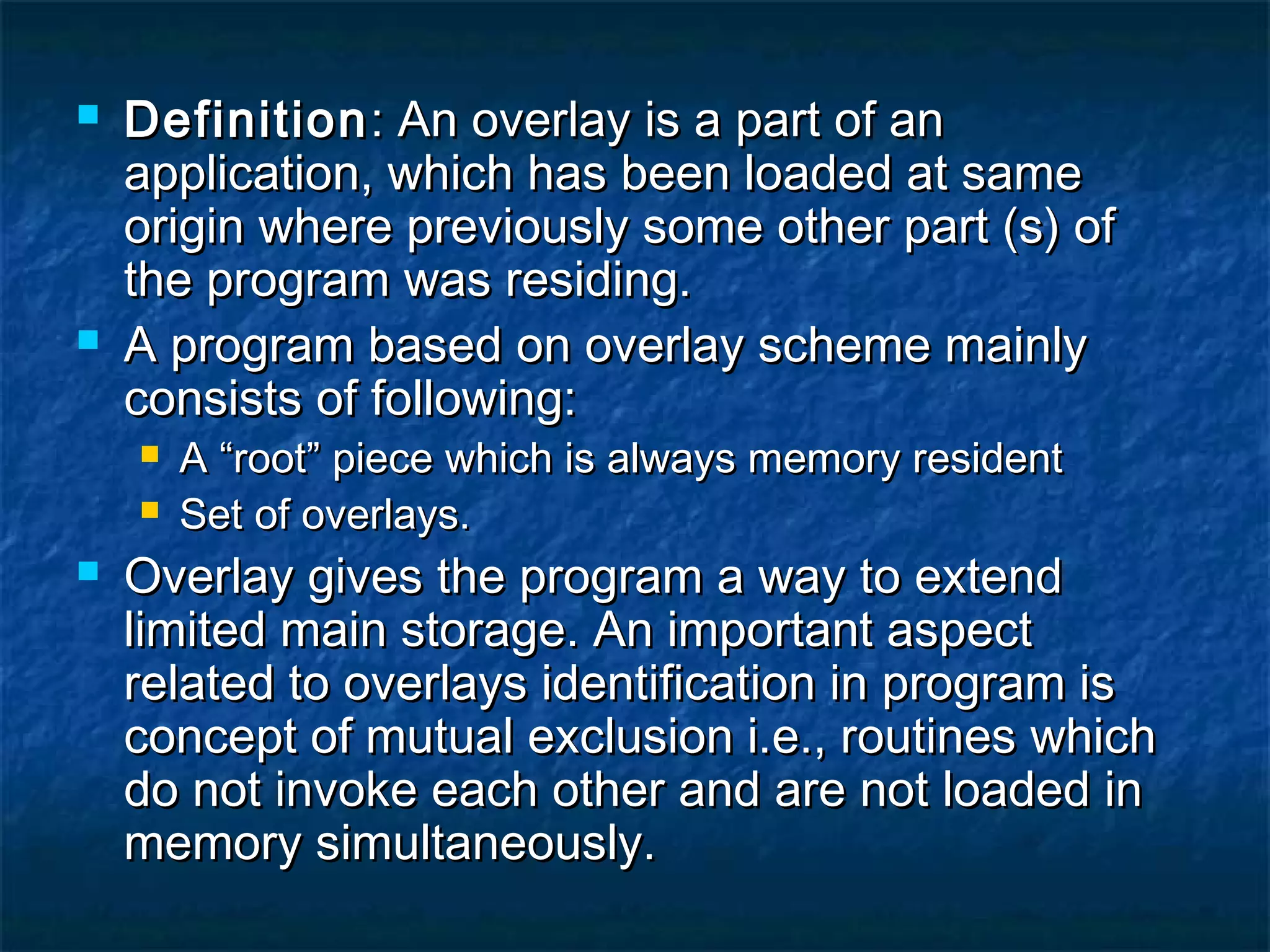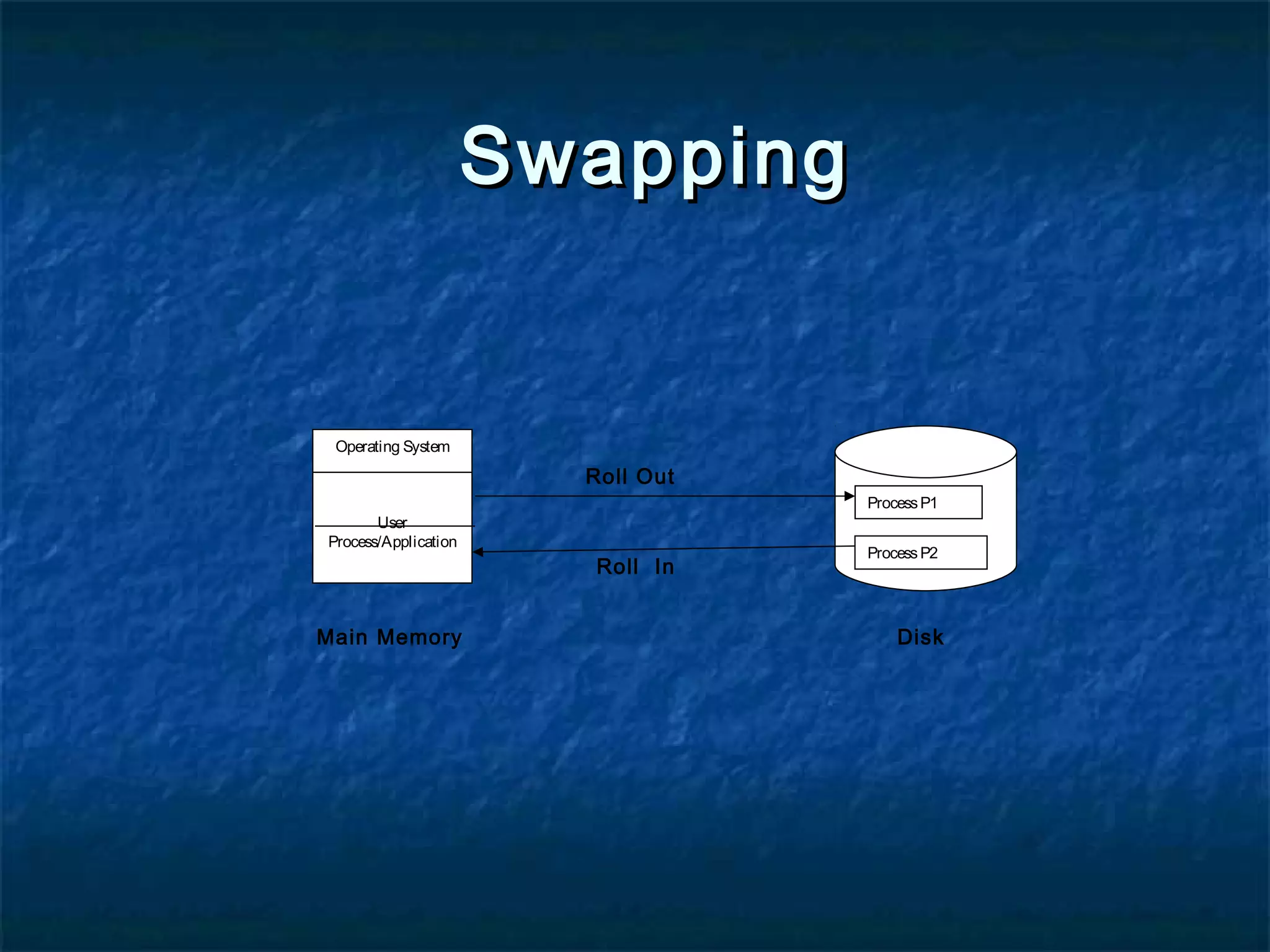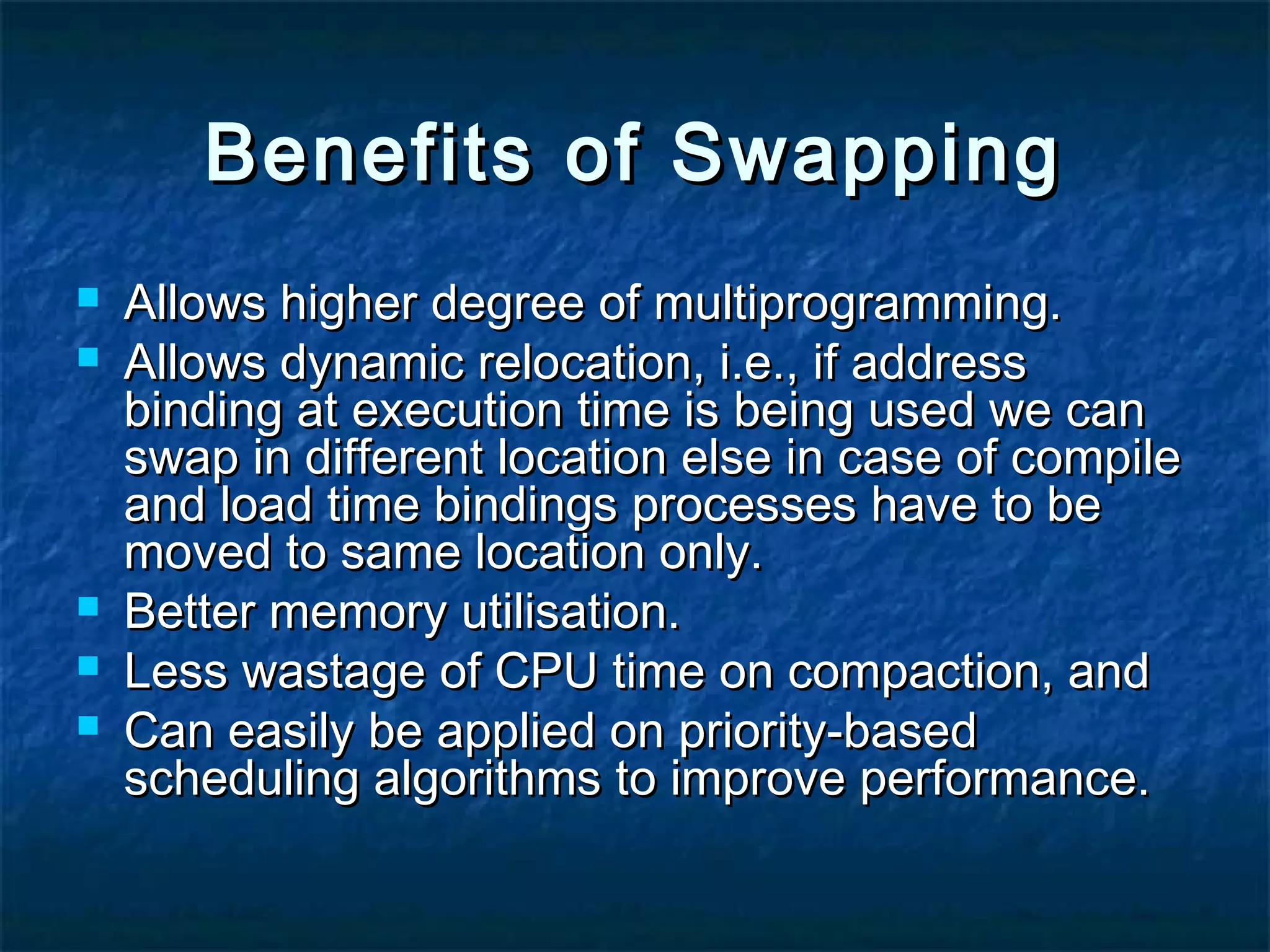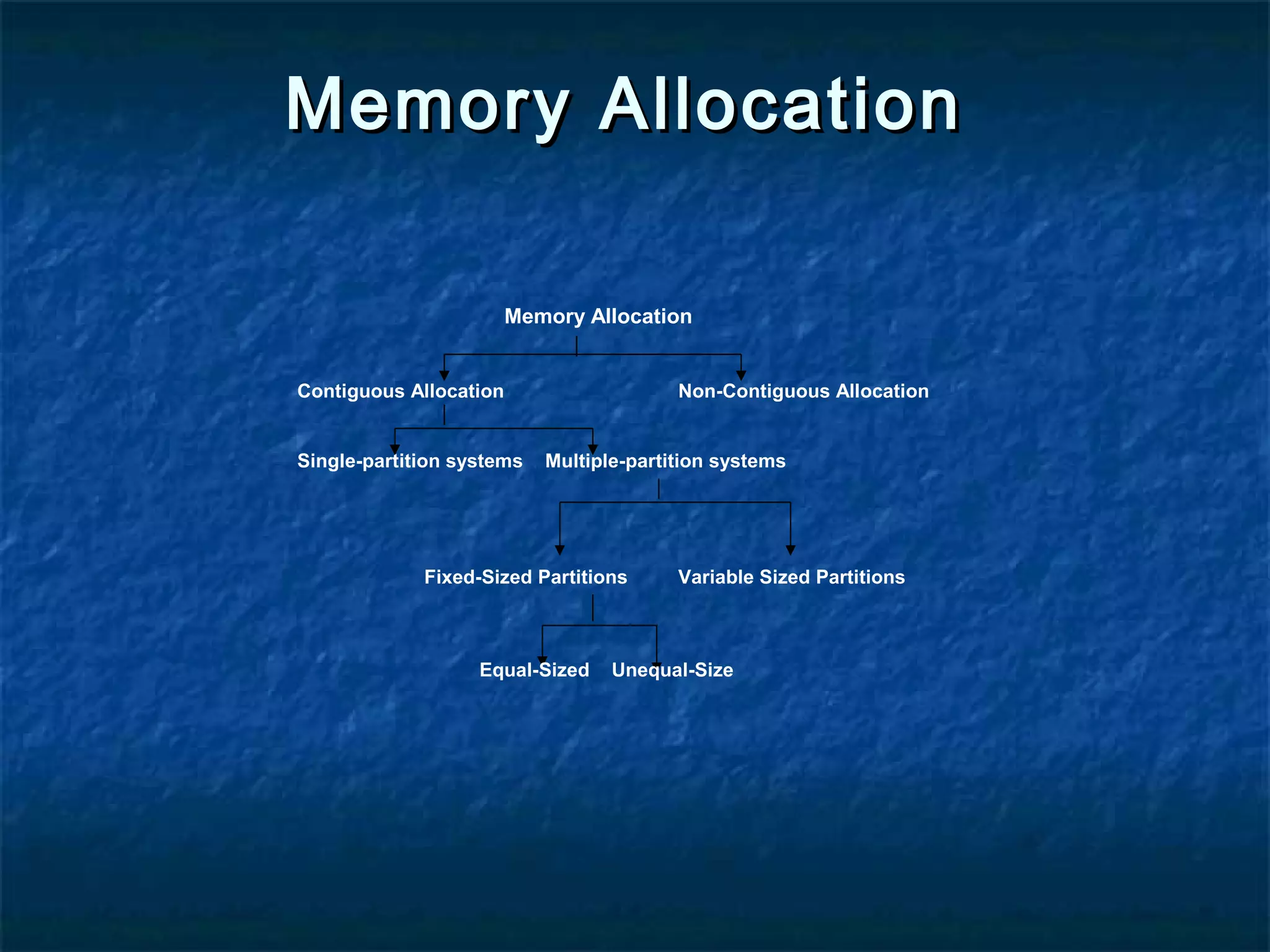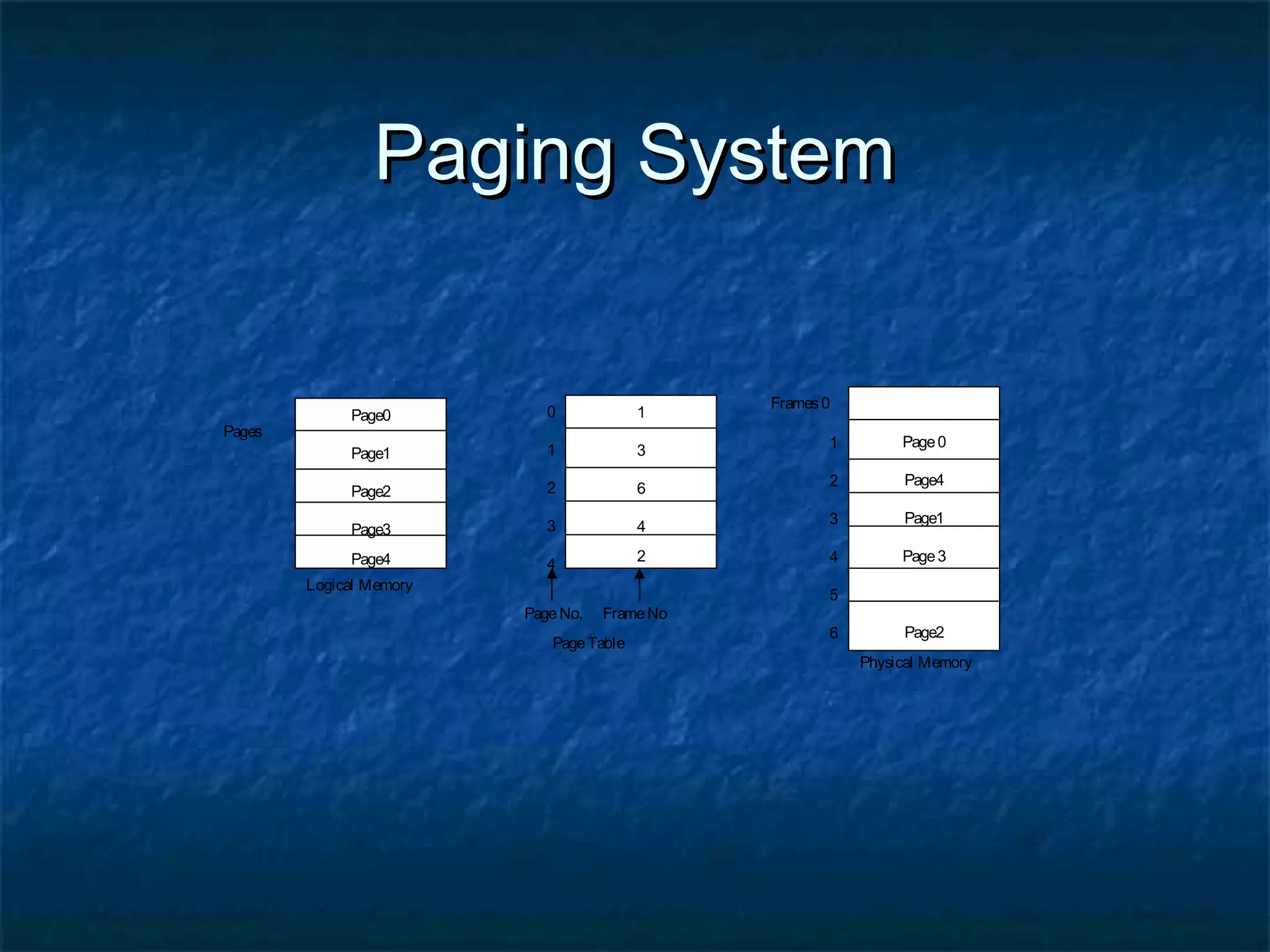This document discusses different memory management techniques used in operating systems. It begins by describing the basic components and functions of memory. It then explains various memory management algorithms like overlays, swapping, paging and segmentation. Overlays divide a program into instruction sets that are loaded and unloaded as needed. Swapping loads entire processes into memory for execution then writes them back to disk. Paging and segmentation are used to map logical addresses to physical addresses through page tables and segment tables respectively. The document compares advantages and limitations of these approaches.
